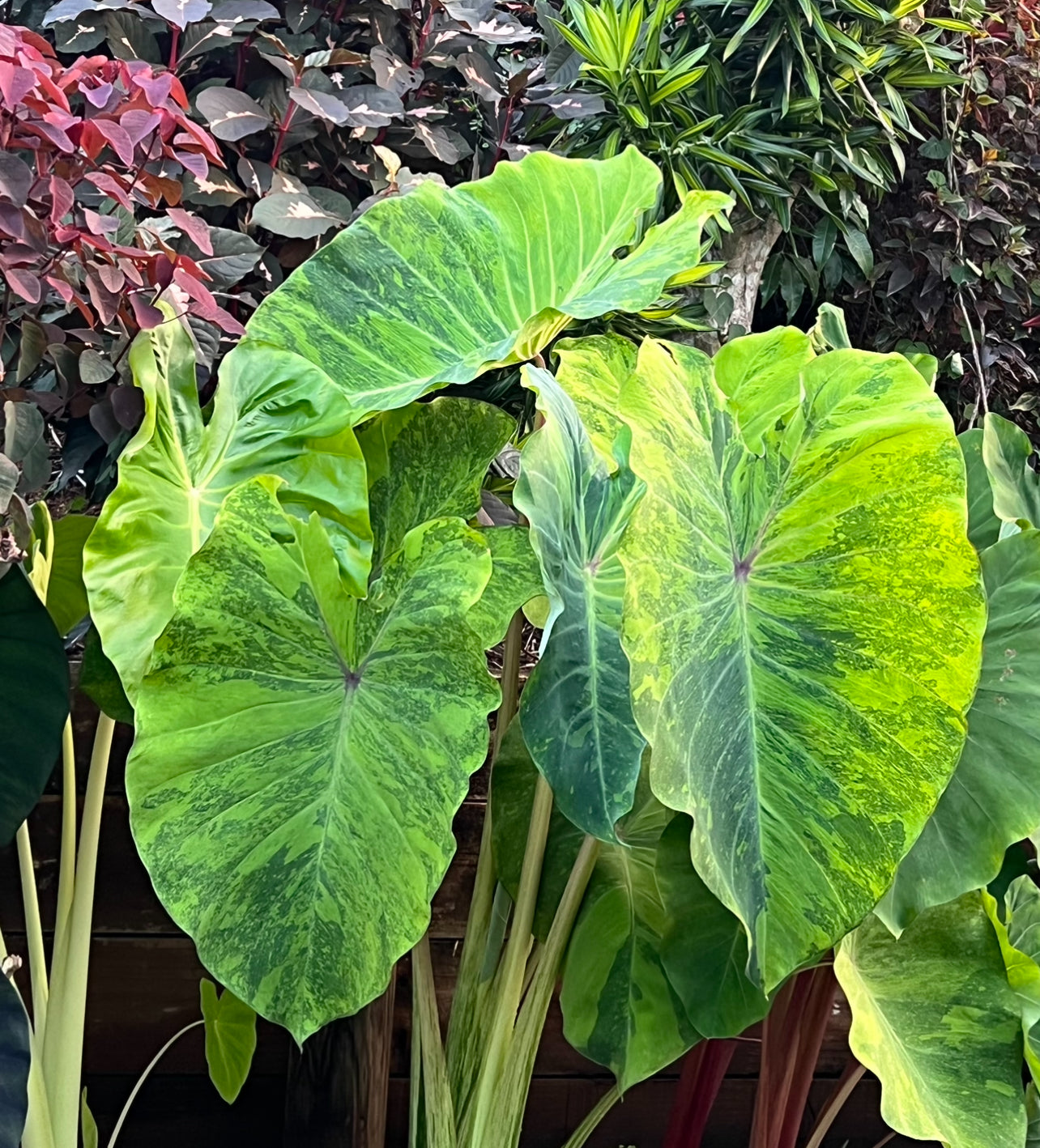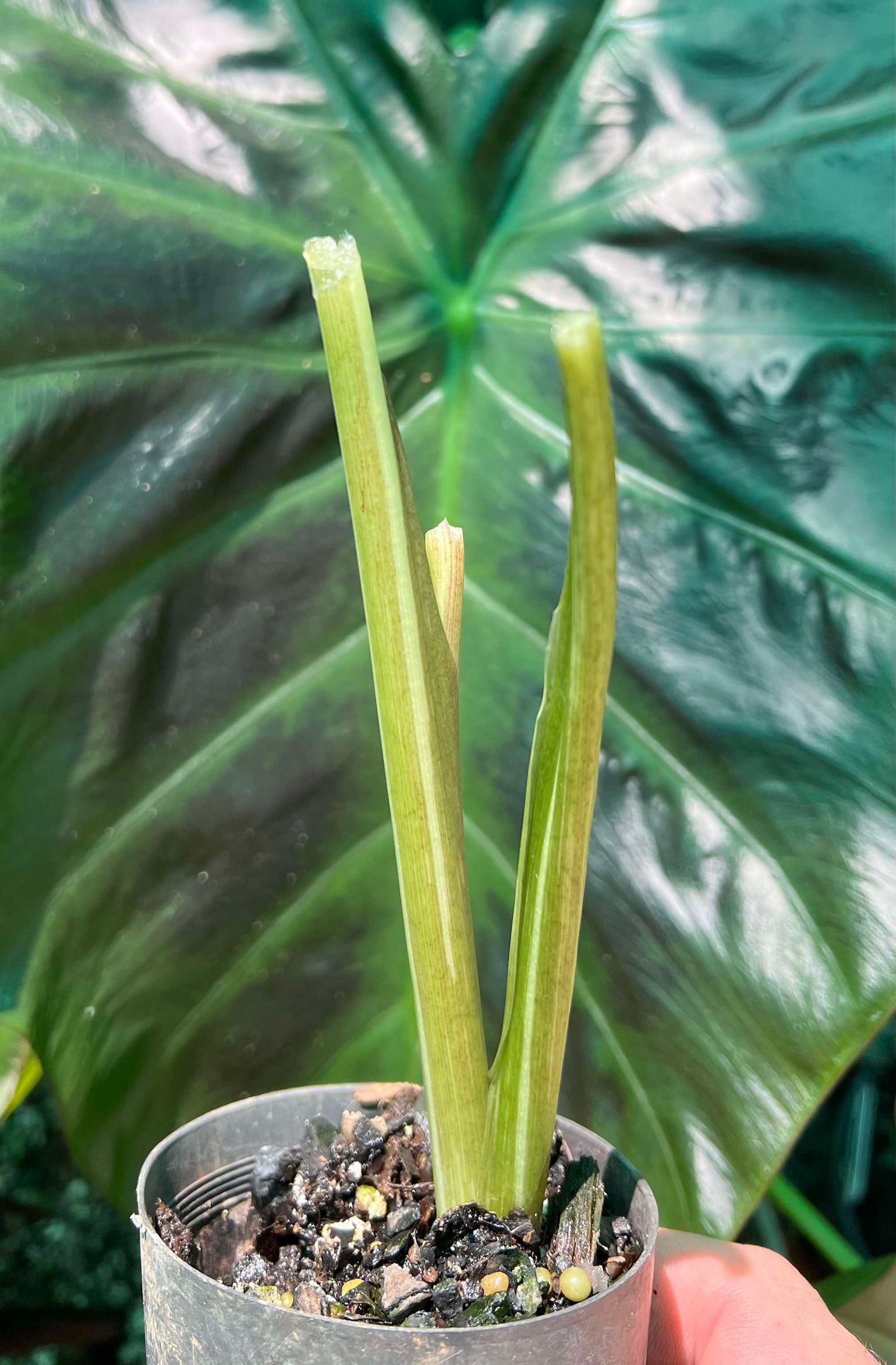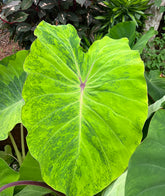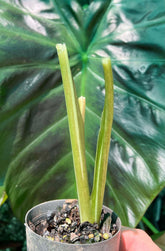Colocasia 'Midori Sour' 75mm Pot
- Regular price
-
$25.00 - Regular price
-
- Sale price
-
$25.00
-
Hurry, only 2 items left in stock!
Couldn't load pickup availability
Shipping information
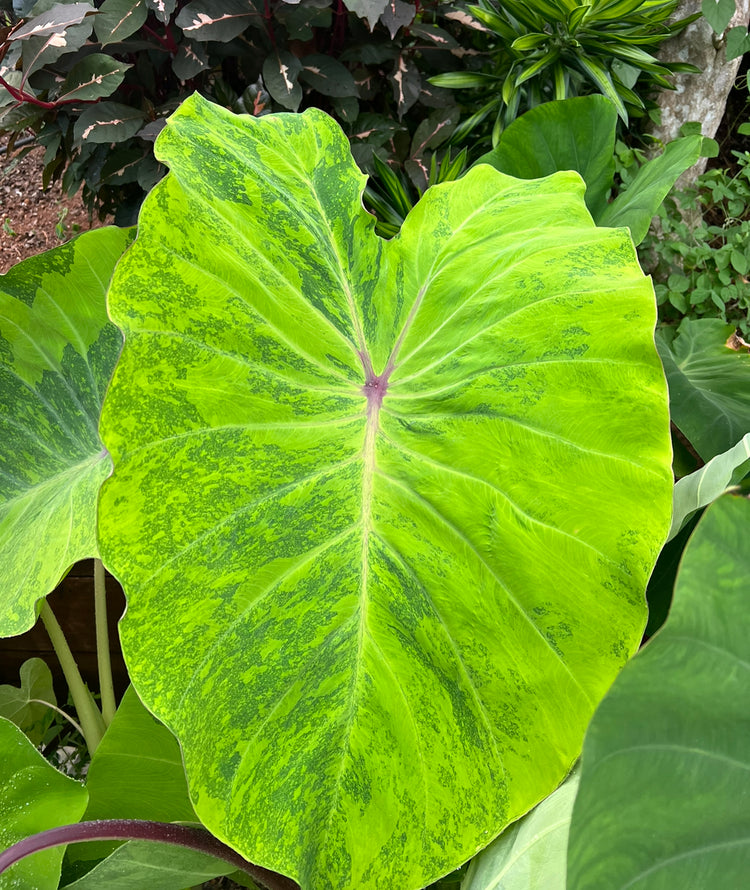
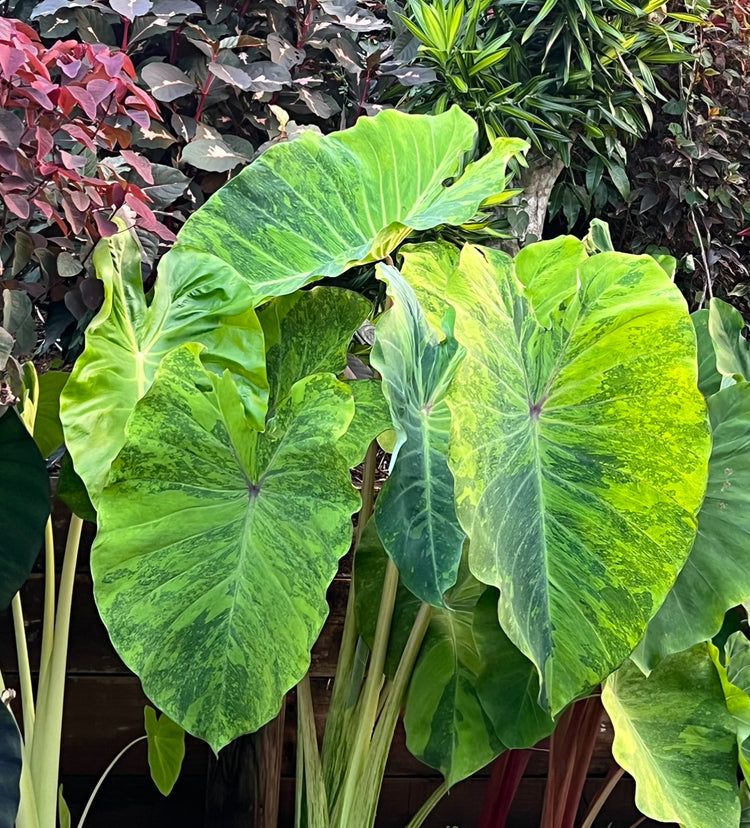
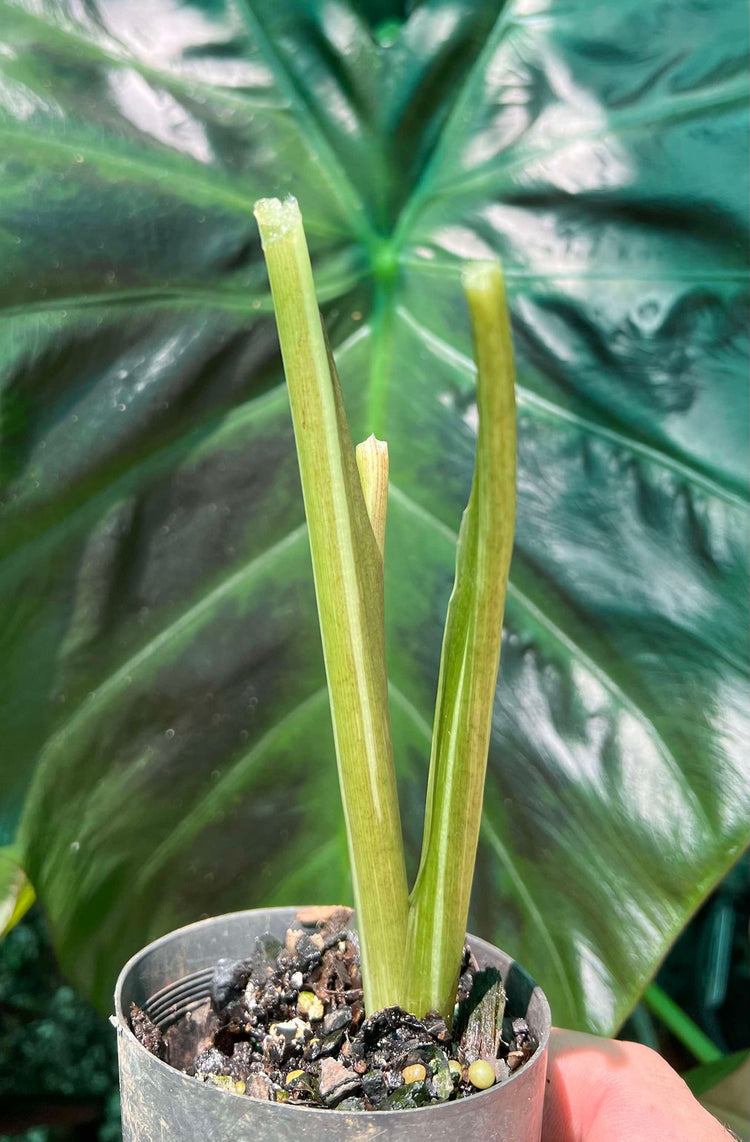
Product Details
SIZE NOTES: a small plant in a 75mm pot
If plants are to large to pack, they will come with leaves removed like in the last photo. They do regrow leaves quite fast so it is usually not a problem. The most important part is that the bulb and roots are established in the pot.
Welcome to Plant&Leaf and our range of family grown plants. The first photo serves as a representative display, showcasing the beauty of a mature plant. Please note the Pot size displayed on the heading of each product.
All of our plants are grown outdoors in nature and are exposed to the natural elements. Sometimes this means a leaf could have been chewed here and there or have a blemish or two – but we do our best to send the best plants we can on every order.
Colocasia, commonly known as elephant ear or taro, are tropical plants that can be grown both indoors and outdoors. Here are some tips to keep colocasia plants healthy:
-
Light: Colocasia plants prefer bright, indirect sunlight. If growing indoors, place them near a window where they can receive plenty of natural light. Outdoors, they thrive in partially shaded areas. Colocasia generally are happiest outdoors and can struggle indoors unless conditions are perfect.
-
Watering: Keep the soil consistently moist and do not allow them to dry out, often a saucer of water under them will keep them happy as they can be very thirsty in the warmer months. During the colder months, you can remove the saucer and keep them dryer but not fully dry.
-
Humidity: Colocasia plants enjoy high humidity levels. You can increase humidity by misting the leaves regularly, placing a humidity tray filled with water and pebbles beneath the plant, or using a humidifier.
-
Temperature: These plants prefer warm temperatures between 18°C to 29°C. Avoid exposing them to temperatures below 10°C as they are sensitive to cold.
-
Soil: Use a well-draining, rich potting mix for colocasia plants. A mix of peat moss, perlite, and compost works well. Outdoors, they thrive in moist, fertile soil.
-
Fertilization: Feed Colocasia plants with a balanced liquid fertilizer diluted to half-strength every two to four weeks during the growing season (spring and summer). Reduce fertilization during the winter months.
-
Pruning: Remove any dead or damaged leaves regularly to encourage healthy growth. Pruning also helps improve air circulation around the plant.
-
Pests and Diseases: Keep an eye out for pests such as aphids, spider mites, and scale insects. Treat infestations promptly with insecticidal soap or neem oil. Colocasia plants can be susceptible to fungal diseases, especially in humid conditions. Ensure good air circulation and avoid overhead watering to prevent fungal issues.
-
Winter Care: If you live in a region with cold winters, consider bringing Colocasia plants indoors or providing them with protection outdoors. Reduce watering during the dormant winter period.
By following these tips, you can successfully keep Colocasia plants healthy and thriving in your home or garden.


